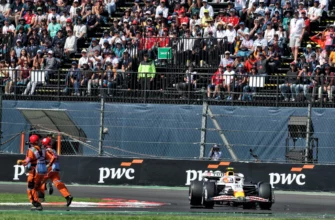In the world of Test cricket, India`s home grounds are synonymous with one thing: spin. Fast-bowlers might claim a wicket or two, but it`s often the dry, dusty surfaces that transform into a spinner`s paradise, a strategic advantage carefully cultivated over decades. Yet, in their ongoing series against West Indies, something feels subtly different. The expected `rank turners` – pitches designed to break up and offer extravagant spin from day one – have been conspicuously absent. This isn`t an oversight; it`s a deliberate, calculated shift, echoing lessons painfully learned from past campaigns.
The Ghost of New Zealand and Jadeja`s Revelation
The decision, as senior Indian spinner Ravindra Jadeja revealed, stems directly from a prior encounter that left a bitter taste. A year ago, India`s aggressive pursuit of home advantage against New Zealand, featuring pitches that turned viciously from the outset, spectacularly backfired, costing them a coveted spot in the World Test Championship final. “We didn`t ask for rank turners,” Jadeja stated matter-of-factly, explaining the current strategy. “We have only asked for slow turners.” This isn`t just semantics; it`s a strategic evolution. The team management, it seems, has opted for prudence over raw aggression, prioritizing adaptability and a more balanced contest.
Navigating the `Slow Turner`: A Bowler`s Burden
A `slow turner` is a fascinating beast. Unlike its aggressive cousin, it doesn`t immediately offer a smorgasbord of wickets. Instead, it demands patience, precision, and raw physical exertion. Jadeja`s description paints a vivid picture: “The bounce is on the lower side, and there isn`t much turn on offer. You have to use your shoulders a lot since less pace on deliveries enables the batter to easily adjust to the length, and they can go on the back foot and play.” In essence, Indian spinners, renowned for their craft, are being asked to earn every single wicket, to coax turn from a less compliant surface, rather than being handed it on a platter. It’s a test of endurance as much as skill, where every over is a battle against the batter and the pitch itself. The irony, for purists, is palpable: the home team making their own lives harder, not easier, in the hopes of a more resilient performance.
Warrican`s Bewilderment: The Un-Indian Pitch
The impact of this strategy wasn`t lost on the opposition. West Indies left-arm spinner Jomel Warrican, who managed to claim three wickets in India`s first innings, openly expressed his surprise. “After watching the last couple of games between England and New Zealand, it was turning square from day one. That was my expectation, but clearly, that`s not the case.” Warrican`s pre-series homework, based on India`s historical tendencies and recent matches, had been rendered largely irrelevant. This `un-Indian` pitch, good for batting on days one and two, forced a complete recalibration of tactics for the visiting team, highlighting the effectiveness of India`s subtle strategic pivot.
Beyond the Spin: A New Era of Home Advantage?
This shift begs the question: Is India redefining what `home advantage` means in Test cricket? It suggests a maturity in approach, where the team understands that extreme conditions, while providing immediate advantage, can also expose their own batsmen to similar perils and potentially undermine their long-term goals, such as securing a World Test Championship final berth. By preparing pitches that demand sustained effort and offer a more even contest, India might be aiming to develop a more well-rounded squad, capable of excelling in varied conditions, not just on their traditional turning tracks. It`s a pragmatic gamble – sacrificing the immediate spectacle of crumbling wickets for a potentially more resilient and adaptable team.
Conclusion
The ongoing series against West Indies, initially perceived as a straightforward home assignment, has become a fascinating case study in strategic cricketing evolution. India`s decision to dial back the `turn` on their home pitches, a direct consequence of past lessons, speaks volumes about their current priorities. It challenges their own bowlers to excel under tougher conditions and keeps the opposition guessing. While the allure of the classic `rank turner` will always hold a special place in Indian cricket lore, this subtle, yet significant, adjustment may well herald a new, more nuanced era for India`s approach to home Test matches.








